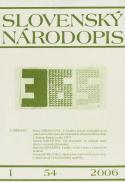Čardáš – ľudový tanec v historickom kontexte
"Čardáš" - the folk dance in the historical context
Author(s): Barbora SkrakováSubject(s): Music
Published by: Ústav etnológie a sociálnej antropológie Slovenskej akadémie vied
Keywords: „čardáš“; newhungarian style; „verbunk“; court and city dances; whirl dances; typology of „čardáš“
Summary/Abstract: Careful study of the available chorological and musicological literature as well as dancing art in its authentic and stylized form confirms the significant position, task and importance of čardáš not only between dances as such, but also in a broader cultural and social life. Čardáš emerged in the end of 19th century on the base of Central European spin dances of the older style, verbunks and court European duo dances as a contribution to the contemporary tendency to create saloon dances using older folk tradition. As an artificial and to the certain extent authorial and intentional product of Hungarian attempts to revive national culture čardáš was a synthesis of the important elements of older spin dances. They were created and performed by all nationalities living on the territory of the historical Hungary, which facilitated the reverse acceptation of čardáš culture in folk environment. On the base of the folk dance (performed usually on Sundays in pubs – in Hungarian csárde, hence čardáš) Lajos Szőllősy Szabó and musician Márk Rózsavölgy created Hungarian square dance – Körtánc, which became the national representative of the Hungarian high society.
Journal: Slovenský národopis
- Issue Year: 54/2006
- Issue No: 1
- Page Range: 47-84
- Page Count: 37
- Language: Slovak

